Key art from Wario World.
There’s a certain strain of Nintendo fan that’s probably wondering, these days: What’s up with Wario platformers? Once a staple of the company’s lineup, action games starring Mario’s bizarro-world clone have been MIA for nearly a decade. By reviewing the history of Wario, we might understand why. So let’s do it.
To trace the history of Wario’s platform action games is, in a sense, to trace the very history of Nintendo itself, from the late 80s to the late 00s. To truly understand Wario, we’ve got to go back a few years before his genesis, to the primordial soup that birthed him, to the game that must be thought of as the Ur-Wario.
The Game Boy, the revolutionary handheld game system, was the brainchild of legendary Nintendo engineer Gunpei Yokoi. As such, the responsibility of crafting the launch titles for the system fell to Yokoi’s division of Nintendo, called R&D1. Nintendo’s president at the time, Hiroshi Yamauchi, kept the various development teams siloed off from each other, competing internally for his praise. Shigeru Miyamoto, creator of Mario, ran a separate team then known as R&D4 (later EAD) and thus didn’t have anything to do with Mario’s maiden portable outing.
Game 1: Super Mario Land (1989)
What Yokoi’s team created for the Game Boy was a really weird Mario. Bowser was replaced with an alien. Turtle shells didn’t bounce; they exploded. Fireballs were replaced with rubber balls that bounced until they left the screen. The familiar enemies were replaced with sphinxes, Easter Island moai statues, and robots. Two levels were actually horizontal shmups.
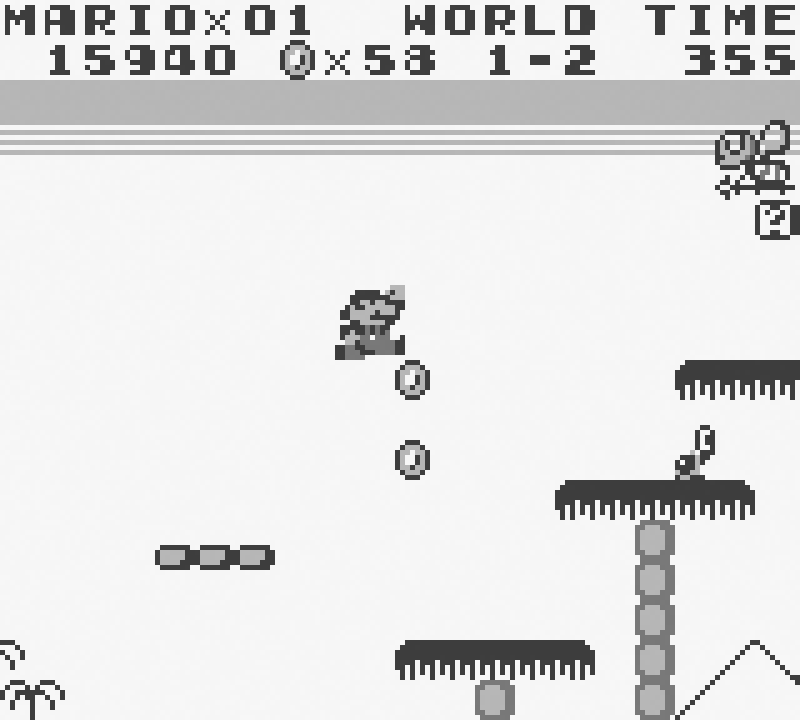
Super Mario Land.
All this weirdness, rather than simply being the arbitrary whims of a new design team, may instead have had a specific design philosophy behind it. “Well, if you take the sound effect when Mario turns into Super Mario as an example, up to midway into the development, we used the same sound effect there that the Super Famicom used,” said Kazumi Totaka, the composer of Super Mario Land 2, in a 1992 interview. “However, using that sound effect on the Game Boy gave a weird, overlapping impression of Super Mario World. We were afraid the player would become negatively conscious of the fact that he was playing on a small screen, that there was no sprite scaling with this hardware, etc. For that reason, we chose a lot of different sound effects from the other Mario games.”
We don’t have similar contemporaneous interviews from Super Mario Land‘s development to fall back on, but it’s not much of a stretch to imagine this same philosophy driving the fundamental weirdness of the first Mario Land — if you change everything around, no one will feel like they’re playing a scaled-down version of something that already exists.
Game 0: Super Mario Land 2 (1992)
Wario debuted here, as the game’s antagonist. “The truth is, we kind of came up with the idea of the name first, and everything else came after,” said the game’s director Hiroji Kiyotake in that same interview. Wario is a portmanteau of warui, the Japanese word for “bad,” and Mario. (It’s also Mario with the M flipped upside-down, for countries in which that wordplay doesn’t fly.)
Kiyotake said they wanted to make the game even weirder, but had to pull back a bit. “However, when we showed our first draft to everyone, they were like, ‘I don’t know… is this Mario?’ We realised we were on the wrong path, so we toned down that idea and made something a little closer to the existing Mario world.”
Game 1: Super Mario Land 3: Wario Land (1994)
So, knowing what we know, we can see how making Wario the protagonist (or at least the anti-hero) of the next game in the series could have been an attempt to square the circle: If a weird Mario was too weird, but a “normal” Mario was too reminiscent of the console versions, why not cut Mario out of the equation altogether?
The main move that separated Wario from Mario was his ability to dash forward and smash blocks with a tap of the B button. This likely derived from the fact that the series’ designers had found that many players had issues holding down the B button to run on the Game Boy while simultaneously pressing A to jump, as stated in that same 1992 interview. Wario Land players only had to switch back and forth between the two buttons, rather than manipulate them simultaneously.
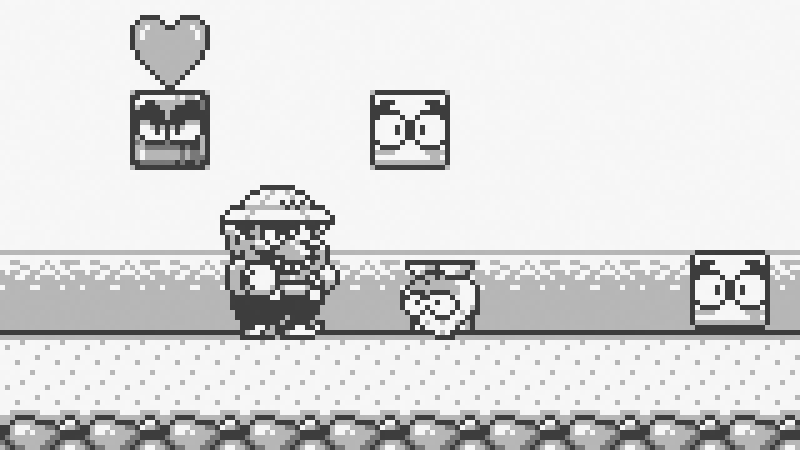
Super Mario Land 3: Wario Land.
Players weren’t just trying to run through the game’s levels — they had to defeat enemies, earn coins, use those coins to open doors, and also search the levels for hidden treasures, which they could redeem at the game’s finale to get a better ending sequence. Very un-Mario-like, but also what you’d expect from the team that also developed games like Metroid and Kid Icarus.
Game 2: Virtual Boy Wario Land (1995)
Nintendo’s Virtual Boy was, too, the creation of Gunpei Yokoi, and so once again it fell to his R&D1 team to create the initial software lineup for the ill-fated 3D device. Since Wario was this team’s star player, that’s why Virtual Boy has its own full-fledged Wario Land. Gameplay-wise it’s not much different from the first, just a few tweaks here and there. I actually played all the way through this game in the summer of 1996, my face perma-lodged in the Virtual Boy’s visor for hours, a fact that I wear like a weird badge of honour.
Game 3: Wario Land II (1998)
The “true” sequel to Wario Land arrived quite a few years after the original and its Virtual follow-up, but introduced a brilliant new gameplay innovation: Wario could not die. This was the logical endpoint of the series’ shift away from platform action and into puzzle-solving; getting hit by enemies could still sap Wario of important powers that he needed to find all the game’s treasures, but clearing a level was now more about thought processes than twitch skill.
An interesting historical footnote: The black-and-white version of this game released in early 1998 was the final first-party monochrome-only Game Boy game, and was not released at all in Japan. The only version of the game that shipped in Japan was the colorized version, on the same day as the Game Boy Colour hardware later that year.
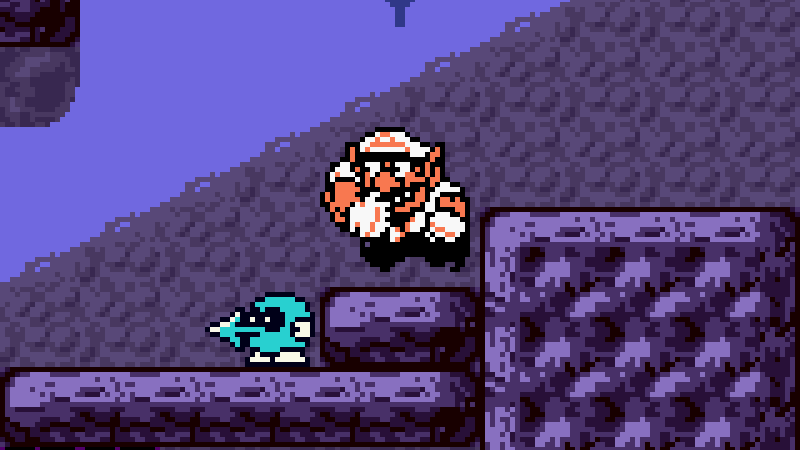
Wario Land 3.
Game 4: Wario Land 3 (2000)
Like Wario Land II, Wario couldn’t die; unlike Wario Land II, the game is laid out in a non-linear fashion. You can visit its levels out of order, although some of them can’t be finished without visiting other levels first. There’s even a rudimentary day-night cycle, with different things happening in each level depending on when you enter it.
Game 5: Wario Land 4 (2001)
Wario’s only outing on Game Boy Advance restored his mortality, although he had an extensive heart-based life bar through which he could absorb a lot of damage. This game took place inside a pyramid that was, similar to the previous title, non-linear. But even though it was an excellent game and well-received, Wario Land 4 actually marked the end of the Nintendo-developed Wario platform line.
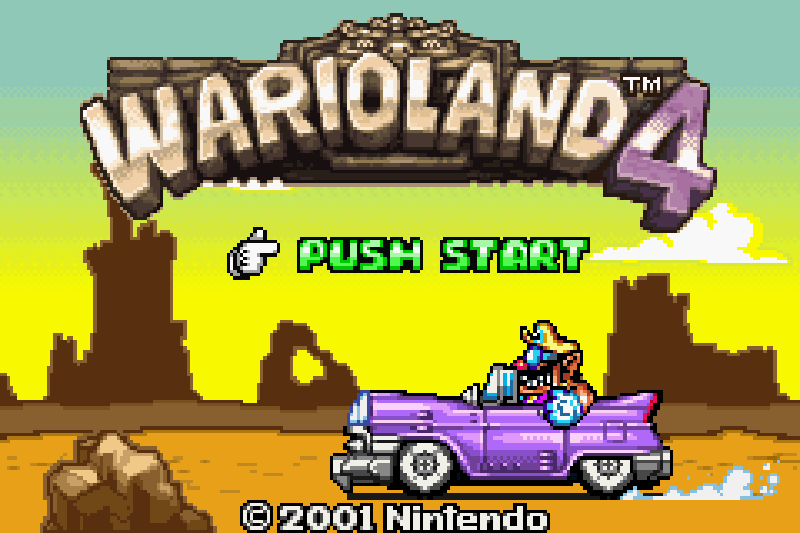
Wario Land 4.
Why? One reason might be that the development conditions that helped inspire the Wario Land concept in the first place were no longer in play: That is to say, the Game Boy Advance was more than capable of hosting Mario games that felt like real Mario games, and indeed Nintendo quickly churned out upgraded GBA ports of Mario 2, Mario 3, Mario World and Yoshi’s Island to fill that gap on the system.
Game 6: Wario World (2003)
The history of Wario post-2001 is a history of what is often inaccurately called “second-party” game development — games published by Nintendo but developed by outside software houses. The first, a 3D action brawler called Wario World, was famous for having been developed by Treasure, the software house renowned for its action games like Gunstar Heroes and the Nintendo-published Sin and Punishment.
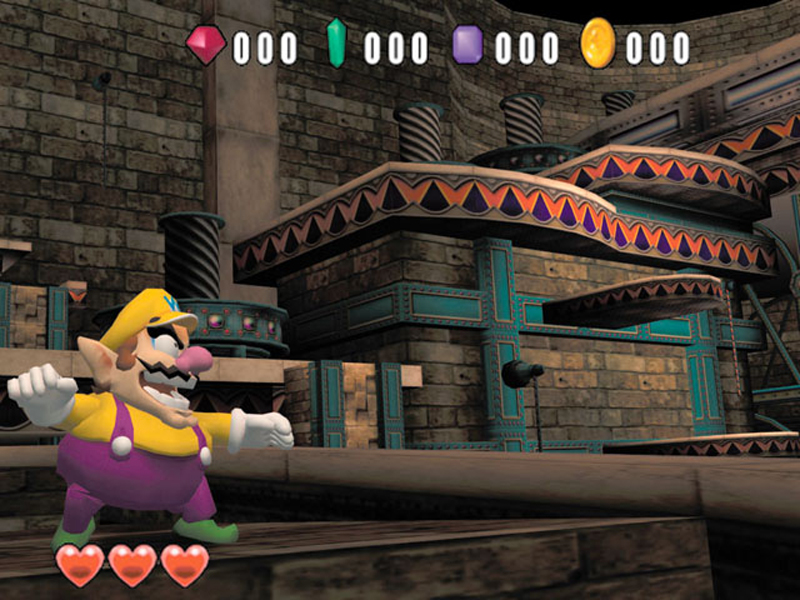
Wario World.
Why look outside, rather than have the original creators of Wario develop it? Because R&D1 was almost entirely siloed away from creating GameCube titles. “Believe it or not, members of the departments that developed Game Boy Advance games did not know the technical detailed specifications of GameCube, and vice versa,” former Nintendo designer Motoi Okamoto told me in an interview earlier this year.
Critics enjoyed the game’s emphasis on combat in 3D arenas, but the whole game was over in about four hours or so. Beating a full-priced console release the day you bought it was never fun, and the shine was starting to come off of the Treasure brand around this time.
Game 7: Wario: Master of Disguise (2007)
After churning out so many Wario Ware games to the point where it was becoming a little bit much, Nintendo finally brought back the Wario platformer on Nintendo DS. This time it was developed by an obscure developer called Suzak, which had few notable credits to its name.
Wario: Master of Disguise sucked. Sorry. It was a noble effort, a combination of buttons and touch gameplay — to dress Wario up in his magical costumes that grant him unique powers, players drew shapes directly on the screen — but boring levels and plodding, slow gameplay make it a chore to drag oneself through. Suzak went out of business a few years later.
Game 8: Wario Land: Shake It! (2008)
After two disappointing entries, Wario came back with a vengeance on Wii. Again, it was developed by a relatively unproven outside software house called Good-Feel, although this one was founded by former Konami talent and knew its stuff. Wario Land: Shake It of course used the then-new Wii Remote for some motion-control hijinks, but at its core it was a solid platformer.
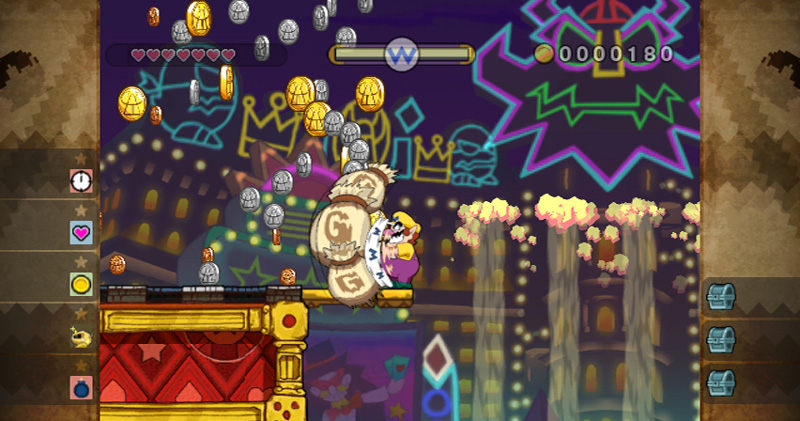
Wario Land: Shake It!
The famous anime production company Production I.G was brought in to do hand-animated sprite work for Wario and the game’s other characters, lavishing Wario alone with 2,000 frames of animation. The results were simply gorgeous, and the gameplay was no slouch either: The clever conceit this time was that Wario, after slowly hopping and bashing his way through each of the game’s levels, would then have to run backwards through the same levels in a mad dash to the finish.
Good-Feel’s success on the project meant that Nintendo quickly promoted them from the B-tier Wario series to more lucrative franchises: first Kirby’s Epic Yarn on Wii, and then Yoshi’s Woolly World on Wii U. So it’s easy to see why Good-Feel didn’t move on with more Wario. And the likely reason that Shake It is the final Wario platformer to date is because Nintendo would have to go out and find another outside developer to take it over.
Wario Land is a pretty complex series with a twisted past. There’s no formula for a Wario game — it can’t just be a Mario-style platformer, and each new game in the series has introduced some new twist on the gameplay in an effort to solve that. Since Nintendo needs the combination of a great new idea as well as an outside developer that can handle it (but that isn’t otherwise occupied on a more important franchise), perhaps the stars that need to align for a new Wario are rather far apart in their trajectories.
Maybe Tecmo Koei could do Wario Warriors.
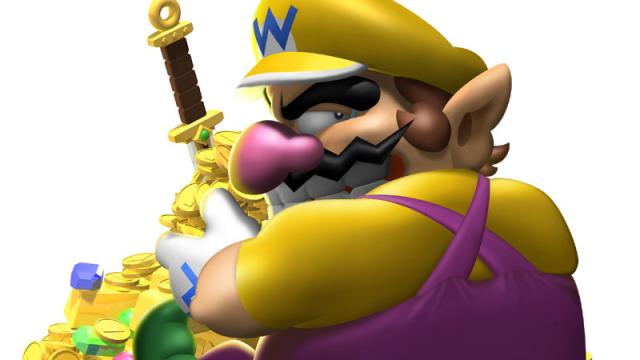
Comments
7 responses to “Nintendo’s Line Of Wario Platformers Ended Far Too Long Ago”
I remember borrowing the original Wario Land off my friend years back. It was one of my favourite Gameboy games.
By the way, I assume Super Mario Land was supposed to be “Game -1”, considering that Mario Land 2 was “Game 0”? That game was WEIRD. Literally the only thing from it that has remained in Mario canon to this day (as far as I’m aware anyway) is Princess Daisy- and she’s been made Luigi’s love interest (Luigi wasn’t even in Mario Land). But I loved the Power Balls that replaced Mario’s regular Fireballs- as well as bouncing off objects at right angles, you could use them to collect coins. There were entire rooms full of coins where you could throw a Power Ball and watch it race around the room collecting dozens of coins for you at once. Magic.
I just want to see him in a Mario game again. Hell, the 4-player ‘New’ Super Mario games would have been perfect! Mario, Luigi, Wario and Waluigi!
Instead we got Mario, Luigi…yellow toad and blue toad. :/
Clone upon a clone upon a clone. I prefer that Nintendo forget about Wario completely. WaLuigi is even worse.
Waluigi is the best. Needs his own game already.
Agreed!
I’d like him to be the star of a modern bonanza bros.
Aren’t Wario games essentially palette-swaps of Mario games? Without any narrative of note, what separates them? Do the world really need more Mario platformers?
If you read the article maybe you would have found the answer to your question.
They absolutely are not
We already know that the Super Mario Run does not play like a classic Mario title. But we are pleased to start this review with the statement that the first Mario mobile game is no less fun than its chronological predecessor’s. http://leastuces.com/2017/04/18/all-24-levels-super-mario-run-so-where-have-you-been
This is without a doubt a charming, polished and highly contagious platformer. You can play with one hand for five minutes or with two hands at seven o’clock, and in both cases is equally good time. Nintendo with sUPER Mario Run proved that indeed knows convey its successful gaming formula and on other platforms. Which is something in which we have until recently still a little suspicious given that the only great mobile bestseller of these companies – Pokemon Go – developed independent studio.